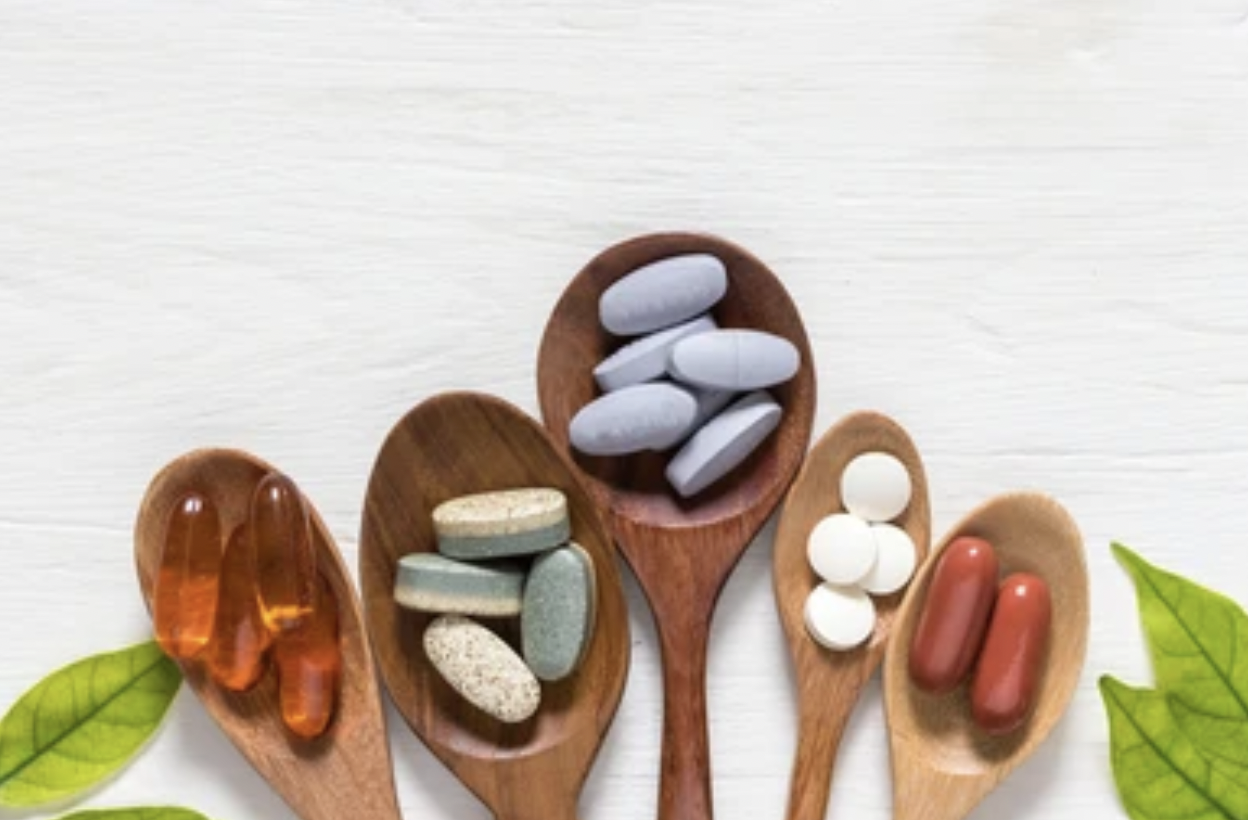The relationship between sugar and diabetes is one of the most misunderstood topics in the health and nutrition world. Many people wrongly believe that sugar is the root cause of diabetes, but that is far from the truth. While eating too much sugar may increase your risk of developing type 2 diabetes, it is not the direct cause of the disease. In this blog post, we’ll explore the relationship between sugar and diabetes, where sugar is found in our diet, the difference between natural cane sugar and artificial sugars, how diabetics can eat sugar, and share a diabetes friendly dessert recipe that has real cane sugar.
Where Sugar is Found in Our Diet:
Sugar is found in many foods and beverages that we consume daily, from the obvious sources like cakes, candy, and soda, to the more hidden sources like condiments such as ketchup, BBQ sauce, and salad dressing. Processed foods, like breakfast cereals and granola bars, also contain high levels of added sugars. It’s important to read labels on food packaging to determine how much sugar is in the foods you eat. Here are some foods that sugar is secretly hiding in…
Processed Foods:
One of the most common sources of added sugar in our diets are processed foods. These include cakes, ice creams, sodas and cookies. These sugary treats have little or no nutritional value and are often high in calories. Sweeteners are commonly added to these foods, making them addictive and compromising our metabolism. It’s always best to read the labels on these kinds of products before consuming them. Alternatively, try homemade versions of these foods using natural sweeteners like maple syrup or honey.
Sauces and Dressings:
Another unsuspecting place that sugar hides is in our favorite sauces and dressings. Barbecue sauce, ketchup, salad dressings, and even salsa can contain added sugars. To avoid hidden sugars in your meals, make it a habit to check food labels and inspect the contents before buying. Incorporating homemade dressings in your meals can also assist since you can control the amount and type of sugar that goes in them.
Drinks:
Sodas, fruit juices, sports drinks are high in sugar and are a significant source of empty calories. While Wach intake is below the daily maximum, consuming these drinks in large amounts leads to high sugar consumption and can significantly impact blood sugar levels. Instead, try swapping sugary drinks with natural options like water, sparkling water, or green tea. Be aware of other ‘safer’ drinks like fruit-infused water, which can mask added sugars if any.
Cereal:
Cereal is a breakfast staple, and many people opt for the “healthy” options without realizing that they could be fueling on added sugars, especially the cereal cabinets for kids. Cereal manufacturing relies on sugar to add flavor and variety to their products, thus their health claims require further examination. Reading food labels and avoiding overly processed cereals and opting for natural ingredients is the best approach.
Fruits:
While fruits are an essential part of our diet, some fruits contain high sugar levels. While it’s best to consume fresh fruits over canned ones due to added sugars, it’s also important to watch how much sugar in fruit juice you consume, either homemade or bought. Even though often marketed as healthy options, fruit smoothies with added sugars can contribute significantly to weight gain and sugar consumption levels.
Sugar is all around us, and to make informed, healthy decisions, we need to know the various sources and types of sugar, including what to look out for. Reading food labels to check levels of added sugars and swapping off processed foods, saucers, and beverages are excellent commitments. Remember, when it comes to sugar, moderation is key, and you’ll receive the best results.
Natural Cane Sugar vs Fructose Sugar vs Artificial Sugar: What’s the Difference?
As more people become aware of the role of sugar in the body, the demand for alternative sweeteners increases. With market shelves crowded with different types of sweeteners, selecting the right one can be difficult. If you are concerned about your sugar intake, understanding the difference between natural cane sugar, fructose sugar, and artificial sugar can help you make informed decisions.
Natural Cane Sugar
Natural cane sugar is the most common sweetener, and it appears in almost every food item we eat. This sugar type comes from sugarcane, where the juice is extracted, refined, and dried. The result is a granulated sugar that is rich in texture and flavor.
One good thing about natural cane sugar is that it is minimally processed, free from harmful chemicals, and contains some vitamins and minerals such as calcium, magnesium, and iron. However, it is worth noting that natural cane sugar is still sugar, and overconsumption can lead to health complications such as obesity, diabetes, and other lifestyle illnesses. Therefore, moderation is key.
Fructose Sugar
Fructose sugar is a natural sugar found in fruits, honey, and some vegetables. It is widely used as a sweetener in many processed foods, including soft drinks, breakfast cereals, and desserts. Fructose sugar has a lower glycemic index compared to cane sugar, meaning it doesn’t raise the blood sugar levels as quickly as cane sugar does.
However, the downside of fructose sugar is that it is metabolized by the liver and can lead to an increase in insulin resistance, high blood sugar levels, and fatty liver disease. Therefore, consuming fructose from whole fruits rather than processed foods is a healthier choice.
Artificial Sugar
Artificial sweeteners come in different forms such as saccharin, aspartame, sucralose, and neotame. These sweeteners are highly processed and do not contain any calories. Due to their low-calorie content, they are a popular choice for people who want to reduce their calorie intake.
However, research has shown that artificial sweeteners can also have adverse effects on the body. Studies have linked artificial sweeteners to weight gain, diabetes, and heart disease. Additionally, artificial sweeteners can disrupt the gut microbiota and cause digestive issues in some people. Therefore, it is best to limit artificial sweeteners and use natural sweeteners when possible.
Choosing the right sugar type for your diet comes down to personal preference and health goals. While all sugar types can be used in moderation, too much of anything can be detrimental to your health. As a rule of thumb, it is best to use natural cane sugar as a sweetener in moderation and opt for whole fruits for a natural fructose sugar fix. When using artificial sweeteners, be mindful of the amount and type you use. Ultimately, the key to a healthy diet is balance and moderation.
Eating Sugar with Diabetes:
Contrary to popular belief, diabetics can eat sugar in moderation as part of their overall diet. However, it is essential to control the portions consumed and limit high-sugar, high-calorie, low-nutrient foods. It’s crucial to speak to your doctor or a registered dietician for personalized dietary advice.
For any diabetic, the thought of indulging in sugar is often marred with fear and hesitation. It is well known that diabetics need to regulate their blood sugar levels, and sugar is considered to be one of the most prominent enemies in this regard. However, what if we tell you that diabetics can indeed enjoy sugar safely, and in moderation? It’s true! Read on to find out how you can relish sugar without it having a negative impact on your health.
Know your limits:
The key to enjoying sugar as a diabetic is to know your limits. You need to understand your body well and know how much sugar you can safely consume. There is no “one size fits all” approach when it comes to sugar intake for diabetics. It depends on your age, weight, blood sugar levels, and medical history. Therefore, consult a doctor or a registered dietician before determining your daily sugar intake limit.
Choose low Glycemic Index (GI) foods:
The Glycemic Index is a measure of how quickly food affects your blood glucose levels. As a diabetic, it is vital to choose low GI foods as they are absorbed more slowly by your body and do not cause sudden spikes in your blood sugar. Foods like fruits, vegetables, whole-grains, and legumes are low on the GI scale but still contain natural sugars. Consuming these foods in moderation can help you satisfy your sugar cravings without having any negative effects on your blood sugar levels.
Avoid Processed Foods:
Processed foods are high in sugar and are often loaded with added sugars or syrups, which can lead to sudden sugar spikes in your blood sugar levels. Therefore, it is best to steer clear of processed foods like candies, baked goods, and sugary drinks. Instead, opt for homemade sweets or baked goods. You can use natural sweeteners such as Stevia or natural sugar substitutes while preparing your recipes.
Portion control is key:
Portion control is the most critical element when it comes to enjoying sugar in a healthy way. You must be mindful of the amount of sugar you consume in any form. For instance, sugar-free foods or drinks besides sugar in other forms such as fat or carbohydrates. Overconsumption of any nutrient can have adverse effects on your health, and sugar is no exception. Therefore, be sure to read nutrition labels and measure your portion sizes carefully.
Exercise regularly:
Exercise is essential for everyone, including diabetics. It helps improve your overall health, increase your insulin sensitivity and keep your blood sugar levels in check. Regular physical activity can also help you enjoy sugar safely as it allows your body to utilize the sugar you intake more efficiently.
Lastly, I figured it’d be helpful to add one of my favorite Diabetes-Friendly Dessert Recipes!
Try this simple and delicious berry parfait that uses real cane sugar…
Ingredients:
1 cup fresh strawberries
1/2 cup fresh raspberries
1 tablespoon pure cane sugar
1 cup plain Greek yogurt
1/4 cup chopped almonds
Instructions:
Rinse berries and chop the strawberries into small pieces.
In a small bowl, combine the berries and sugar.
Layer each serving dish with alternating layers of berries and Greek yogurt.
Top each dish with chopped almonds for added protein and crunch.
Conclusion:
In conclusion, sugar isn’t the root cause of diabetes, but it can exacerbate the problem if consumed excessively. It’s vital to understand where sugar is found in our diet, the difference between natural cane sugar and artificial sugars, and how much sugar is healthy for diabetics. With moderation and a healthy diet, even those with diabetes can indulge in delicious dessert recipes like the berry parfait above. Remember to always consult with your healthcare professional for advice on dietary changes if you are living with diabetes.
This content is for informational and educational purposes only. It is not intended to provide medical advice or to take the place of such advice or treatment from a personal physician. All readers/viewers of this content are advised to consult their doctors or qualified health professionals regarding specific health questions. Neither Abraham Parker, nor the publisher of this content takes responsibility for possible health consequences of any person or persons reading or following the information in this educational content. All viewers of this content, especially those taking prescription or over-the-counter medications, should consult their physicians before beginning any nutrition, supplement or lifestyle program.



